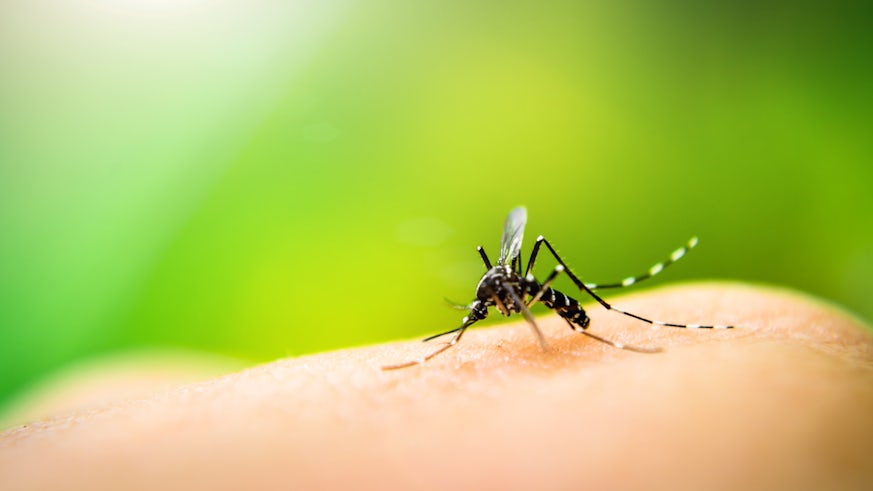Researchers identify “smell” given off by malaria-infected children
18 April 2018

Children infected with malaria give off a distinctive smell through their skin which makes them even more attractive to mosquitoes, researchers have found.
In a new study published today a team including scientists from Cardiff University have been able to identify this unique chemical fingerprint for the very first time, opening up the possibility of developing a system to lure mosquitoes away from human populations.
By studying samples taken from 56 children in western Kenya, the team identified a “fruity and grassy” smell that was emitted through the skin of individuals infected with the malaria parasite, Plasmodium.
Analysing the precise nature and concentration of the smell revealed that a group of compounds known as aldehydes – specifically heptanal, octanal and nonanal – were responsible for the unique odour.
Results showed that the proportion of aldehydes increased from about 15% of the total odour in non-infected individuals to almost 23% in infected individuals, with a higher amount of aldehydes emitted in line with a higher the density of parasites in the blood.
The results have been published in the leading scientific journal Proceedings of the National Academy of Sciences.
Co-author of the study Professor John Pickett FRS, from Cardiff University’s School of Chemistry, was the first to identify mosquito pheromones in the 1980s and believes the new findings could help develop a system to ‘trap’ malaria-carrying mosquitoes.
He said: “In this study we’ve identified the underlying chemical fingerprint, comprising specific volatile aldehydes, which is given off as an odour when humans become infected by malaria parasites.
In their study, the team collected odour samples from 56 children between 5 and 12 years old in Kenya by placing a special plastic bag around the foot of each child.
The foot odour collected on a filter was analysed by Dr Ailie Robinson, of the London School of Hygiene and Tropical Medicine, who also studied whether the “nose” of the mosquito responded differently to the collected odours of children with and without malaria.
Using nylon socks worn by the children for one night, it was shown that the body odour of children with malaria was indeed more attractive to mosquitoes than the odours of malaria-free children.
Lead author of the study Dr Jetske de Boer, from Wageningen University in the Netherlands, said: “These are fairly common smells, which are described as fruity or grassy. But for malaria mosquitoes they are very attractive.
"Now that we have identified and quantified the aldehydes associated with malaria infection, we understand more of the parasite's infection route. That also creates opportunities to intervene in that chain. We can improve our odour-baited traps for mosquitoes by adding a considerable amount of these attractants.
“Moreover, these compounds can serve as biomarkers with which diagnostic tools can be developed, without the physician having to draw blood. This would be faster and a lot more child-friendly."

